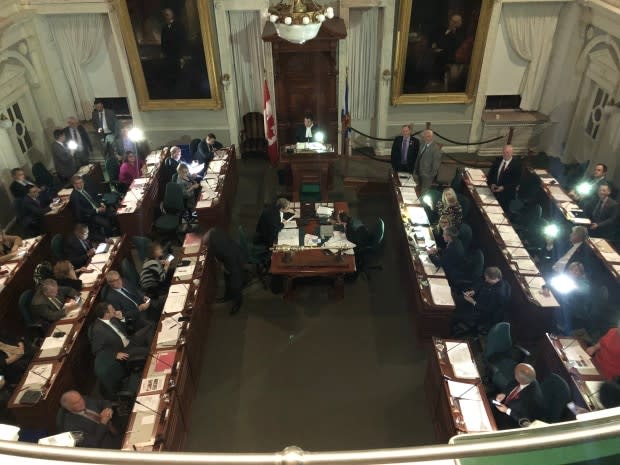Province House installing generator to ensure outages don't derail debates
There are plenty of jokes to be made about politicians always being in the dark, but a large-scale power shutdown in downtown Halifax last fall did, in fact, leave dozens of MLAs in the dark, halting debate mid-sentence.
It also meant Speaker Kevin Murphy, who uses a wheelchair to get around, needed his colleagues to lift him and his wheelchair and carry him down a flight of stairs so he could get to his ground floor office and out of the 200-year-old building.
"It's always a bit precarious when you have to do that," Murphy said Friday. "Over the course of 35 years I've been carried up and down lots of stairs for lots of different reasons and, you know, it's never an ideal situation."
The fact that the Speaker was so unceremoniously carried down a flight of stairs spurred the move to get a backup power supply.
The province recently paid $67,125 to Sansom Equipment Ltd. for a large generator to be installed on the Nova Scotia Legislature grounds to prevent further power breaks from interrupting the work of elected officials, or preventing people from being able to leave the building in an emergency.
According to tender documents the "emergency standby power" system should be capable of delivering power up to 200 hours a year and be enclosed within a "sound attenuated enclosure."
Workers from Transportation and Infrastructure Renewal will complete the installation, likely by the end of November. Work has already begun to prepare the area where the generator will be located and where power lines will be laid.
On the evening of Oct. 28, NDP Leader Gary Burrill had just started debate on a bill to ban plastic shopping bags when the chamber suddenly plunged into darkness. The power was out for most of the downtown. Roughly 19,000 customers were without power, including Province House.

Although MLAs milled about the chamber for 15 to 20 minutes, using their cellphone lights to read documents or provide extra light, Murphy adjourned the House at 7.29 p.m.
Without a way to properly record the proceedings, debate could not continue.
Although there was some emergency lighting, the building does not have backup power, which meant the elevator Murphy and others need to access the three floors at Province House was inoperable.
At the time, Murphy said he was surprised to learn that the elevator would not work during a power failure. It also spurred him to start discussions about the need for a backup power supply.
A tender was issued in April and work has started to prepare a spot near where MLAs park their vehicles for the generator to be installed.

Murphy said the generator, powered by natural gas, should be powerful enough to keep the debate going in the event of another power outage.
"It's designed to be an uninterrupted system, so in the event of an interruption, the generator system will kick in and we can continue on presumably without any hiccups whatsoever."
When Province House first opened in 1819, the building had no heating system and candles would have provided the only lighting. Gas lights came later, which were then replaced by electric bulbs.
It's unclear when electricity first arrived at Province House, but it would have been one of a first few building to get connected by the late 1800s.
An electricity bill appears in documents from 1886, which shows the province paid $100 to the Halifax Electric Light Company, which began producing electricity in February 1885.
MORE TOP STORIES


